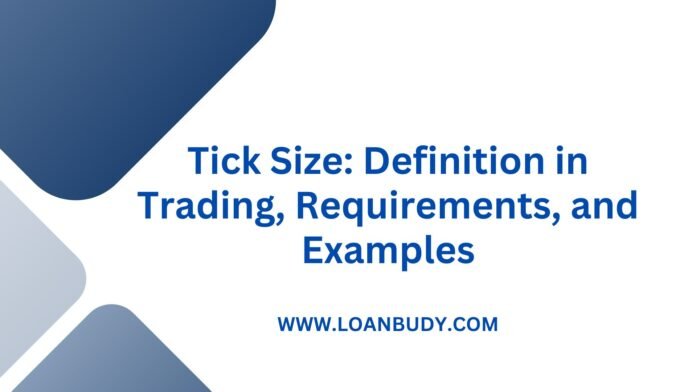Understanding tick size is essential for anyone involved in trading, whether you’re a novice or an experienced investor. This guide will explain what tick size is, its requirements, and provide examples to illustrate its significance in the trading world.
What Is Tick Size?
Tick size refers to the minimum price movement of a trading instrument. It represents the smallest increment by which the price of a security can change. Tick size is crucial because it affects trading strategies, liquidity, and market dynamics.
For example, if a stock has a tick size of $0.01, it can only move in increments of one cent. Therefore, the price of the stock might change from $10.00 to $10.01, but not to $10.005.
Importance of Tick Size
- Market Liquidity: Tick size can influence how easily traders can enter and exit positions. Smaller tick sizes can lead to tighter spreads, which can improve liquidity.
- Trading Costs: Understanding tick size helps traders estimate potential trading costs. Larger tick sizes can lead to higher costs when buying or selling shares.
- Price Discovery: Tick size affects the price discovery process. A smaller tick size can allow for finer adjustments in pricing, helping the market reflect the true value of a security.
Tick Size Requirements
Tick size requirements can vary based on several factors:
- Exchange Regulations: Different exchanges have specific rules regarding tick sizes. For example, the New York Stock Exchange (NYSE) and NASDAQ have different tick size standards for various securities.
- Security Type: The type of security (e.g., stocks, options, futures) often dictates the tick size. For instance, large-cap stocks may have a smaller tick size compared to penny stocks.
- Price Levels: The price of the security can also determine the tick size. Higher-priced stocks may have larger tick sizes due to reduced volatility.
Examples of Tick Size
To illustrate tick size in action, here are some examples:
- Stocks:
- A stock trading at $50.00 with a tick size of $0.01 can move to $50.01 or $49.99, but not to $50.005.
- A penny stock trading at $0.10 may have a tick size of $0.001, allowing it to move to $0.101 or $0.099.
- Futures Contracts:
- In the E-mini S&P 500 futures market, the tick size is 0.25 index points. If the index is at 4,000, it can move to 4,000.25 or 3,999.75.
- Options:
- For options contracts, the tick size can vary depending on the underlying asset and the exchange. Some options may have a tick size of $0.05, allowing for movements in increments of five cents.
Conclusion
Tick size is a fundamental concept in trading that influences liquidity, costs, and market dynamics. Understanding its definition, requirements, and practical examples can help traders make more informed decisions and develop effective trading strategies. Whether you’re trading stocks, futures, or options, being aware of tick size is essential for navigating the markets effectively.
Read More:
- How to Invest in Crypto currency: A Beginner’s Guide
- Understanding Bid and Ask Size on a Stock Quote
- Multiple Listing Service (MLS): Definition, Benefits, and Fees












